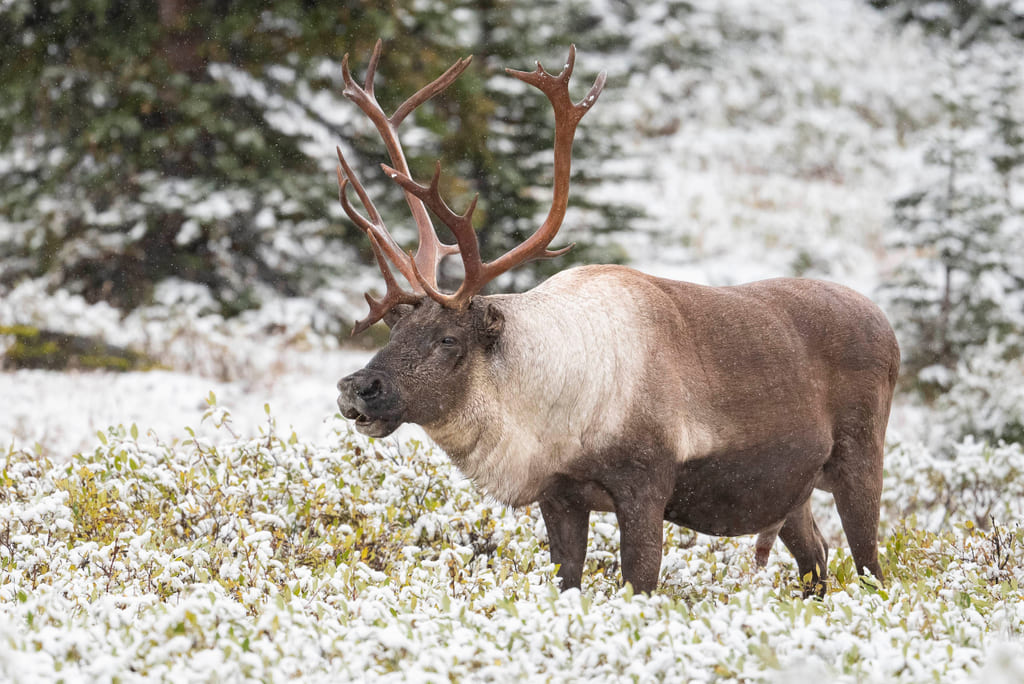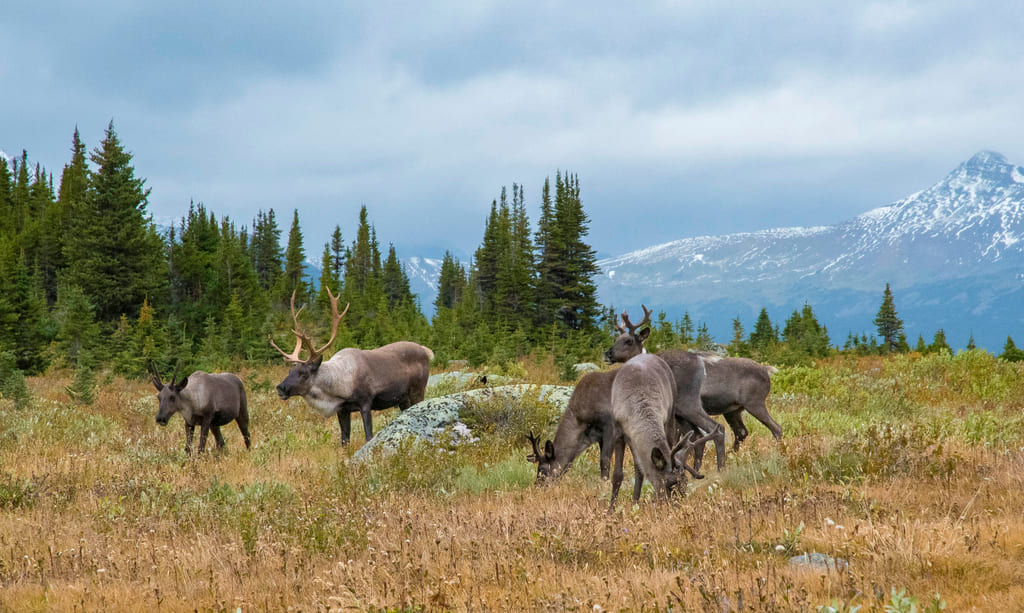After a brief respite, the two warriors faced off once again.
It was early winter, and the rut (mating season) was in full swing. Nearby, a large group of female caribou were the motivation for the epic bout. I had been watching the bulls fight for more than half an hour. These were two battle-scarred veterans in their prime. Neither would back down. With nostrils flared and plumes of breath visible in the sub-zero temperatures, they met in a loud clatter of antlers.
With a series of pushes and shoves, accompanied by a symphony of panting, snorting and grunting, the caribou fought for position. Unlike bighorn sheep which collide at high speeds, caribou are more like a pair of Sumo wrestlers, grappling and pushing to gain ground.
Suddenly, with a powerful twist of his massive neck, one of the bulls flipped his opponent onto his back! The defeated bull got to his feet and staggered off to a safe distance from the herd. He stood there panting, utterly exhausted. I left the scene, knowing what I had just witnessed was truly special.

Polygynous profiling
All of Jasper’s deer species (that includes moose, elk, caribou, mule deer and white-tailed deer) engage in a similar high stakes mating game. Typically, a large male will guard a group of females and, in an attempt to monopolize mating opportunities, fight any challengers to his harem. In a previous article, I mentioned how birds usually have only one mate, while mammals have several. The deer family take this approach to the extreme with the system known as polygyny, meaning one male to many females.

Live fast, die young, sire a lot of offspring
Polygyny leads to a large disparity in size between males and females. While females need only be large enough to survive and raise their young, it’s to a male’s advantage to be as large as possible in order to win these heavyweight battles and have any chance of fathering young. This “grow big and fight hard” strategy has consequences, however; males typically have shorter life spans. Polygyny also leads to huge disparities in breeding success for the males. If a male elk, for example, wins this mating lottery, it fathers a large proportion of the next generation. If it loses, however, that bull’s direct genetic line dies with it.

Sneaking around
In Jasper National Park, it is common during mating season to see a large group of female elk, with a resident bull fending off any pretenders to the throne (including vehicles, it should be noted!). As with caribou, bull elk can only maintain control of a group of females for so long before exhaustion sets in—and there are always interlopers waiting for their chance to take over. Smaller males that have no chance of prevailing in battle will hang out on the periphery and try to isolate a female or two for a little sneaky mating.

Moose also engage in polygyny, but to a lesser degree. In treeless areas of Alaska, there are many females per male. However, for moose that live in forests, the ratio is almost one to one. Perhaps it is just too difficult to keep track of many females if you can’t see them all—hard to see the tuchus through the trees, or something like that. Either way, one doesn’t typically see Jasper moose congregating in large mating groups.

Smaller Jasper deer (mule and white-tailed) are more like moose: the males do fight, and will gather groups of females when they can, but generally the mating groups are smaller than for caribou or elk.
This past September I returned to the Tonquin Valley and was once again again lucky enough to witness a bull keeping watch over a group of females. There were no opposing bulls to vanquish while I was there, but this fellow was taking no chances, and maintained strict vigilance nonetheless!

Mark Bradley // info@thejasperlocal.com


